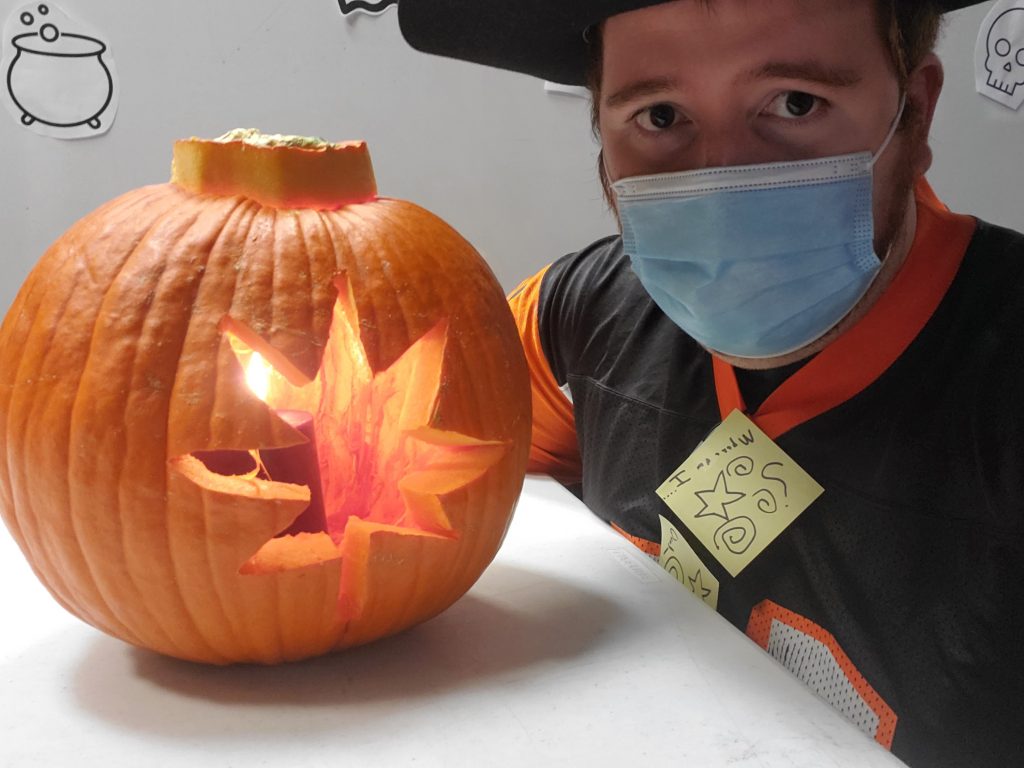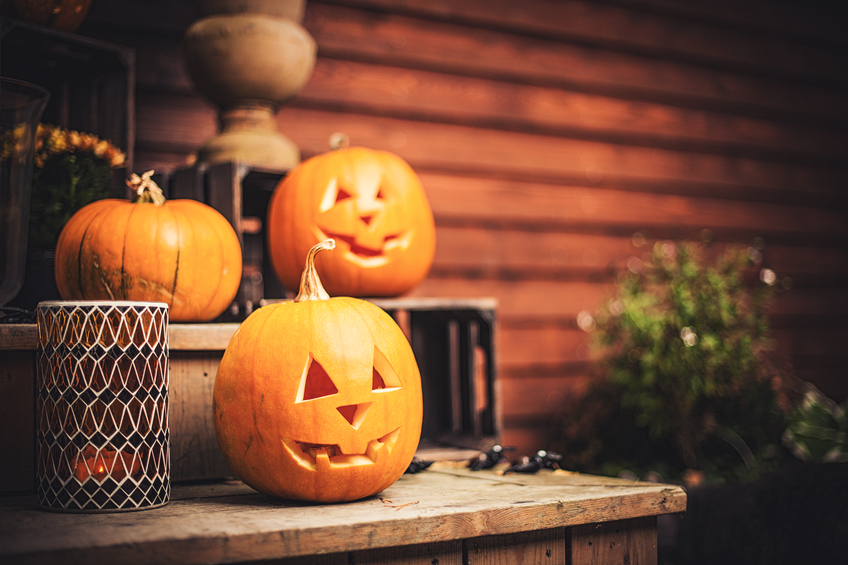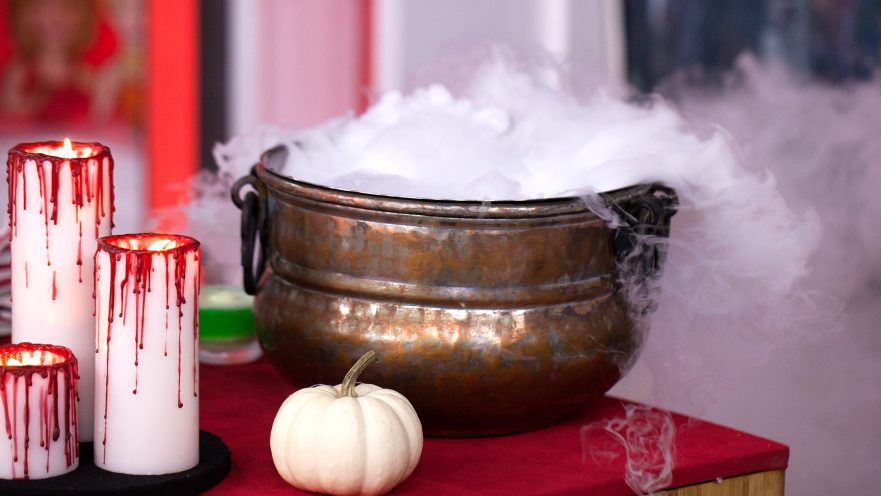Most people observe Halloween as a special holiday to celebrate the dead. Its roots come from ancient pre-Christian Europe. Each country or culture has its own kind of Halloween ritual.
Samhain
During the Iron Age of the 5th century (500 BC -332 BC) the Celts in Central Europe were the first who celebrated it as a three-day Pagan festival of Samhain (summer’s end). Samhain resembled the end of the harvest season and the beginning of winter, a rebirth, brought upon a new year. Celts were deeply connected with the religious belief a year is divided into two halves; Dark and light, which allowed for four fire festivals to occur around solstices.
Samhain was when the veil between the worlds of the living and the dead were thinnest. It’s a blurry time period when tricks and pranks took place. The common belief of the Celts was the dead could return to the world of the living. They would stock goods, harvest their crop and sacrifice animals as well as throw the bones into the bonfires. Whole communities would gather around the bonfires to feast. They would welcome the “otherworldly visitors” with their favorite dishes.
To trick a spirit they would spread the bonfire ashes on their face, introducing the idea of wearing masks.
Christianizing Period
During the 9th century, the Church maintained the Samhain tradition by Christianizing it throughout Northern Europe. The celebration integrated elements of vigil, praying and fasting before the feast day. By the 16th century, “souling” also became the new Christian way to celebrate. The poorer populations knock on doors of their neighborhood and ask for soul-cake or soul-mass-cake in exchange for prayers.
The Date
During the 7th century Pope Boniface IV made the decision for this celebration to be May 13th. He declared the Pagan Temple of Pantheon to be a sacred place for Saint Mary and other Christian martyrs. The day All Saint’s Day was born; A day to feast and celebrate saints who did not have their own day.
During the 8th century, the date moved to November 1st and was renamed to All Hallow’s Eve. Moving the date closer to the time when Samhain was celebrated.
During the 17th century, the celebration of Guy Fawkes Days on November 5th involved bonfires and fireworks. In addition, unpopular figures, such as the pope, were mocked. The poor and often children would go door to door with masks on, asking for treats or money. A part of this celebration included the effigies of Guy Fawkes. He was a Christian who tried to assassinate the Protestant King, that would get thrown into the bonfires.
United States of America
The tradition of trick-or-treating in costumes was brought to the U.S. by the British. In the 17th century, Guy Fawkes Day was observed until the end of the American Revolution. After 1783, the celebration evolved into mischief night, to vandalize people’s homes.
In the mid-19th century, jack-o-lanterns made out of hallowed-out turnips were adapted. This was a way to protect from Stingy Jack, an Irish folk tale figure associated with hellfire.
In 1912, Kansas got fed up with the vandalizations of Elizabeth Krebs’s, aka the mother of modern Halloween, garden. In hopes to stop the vandalizing, a party was organized the next year for young people. This party included costume contests, parades, music, food and sweet treats for everyone. Surrounded by decorations of ghosts and other scary creatures. When other nearby cities heard how the Halloween celebration became more festive than disruptive, they adapted to this tradition.
Mexico
Between October 31st and November 2nd is the time to laugh in the face of death. Celebrating the memories of deceased loved ones. The border between the spirit world and the real world dissolve. The souls of the deceased are welcomed to participate in a feast with food, drink and dance. On midnight of October 31st the gates of heaven are open till midnight. The next 24 hours is El Dia de los Inocentes, the day of the children. This day allows the spirits of children to reunite with their families. On November 2nd, El Día de los Muertos or Day of the Dead, the same takes place for adults.
The souls would travel to Chicunamictlan, Land of the Dead, which consists of nine levels, ending in Mictlan. In Nahua traditions, loved ones would honor and assist the dead in August. Leaving food and drinks the deceased enjoyed in life on their graves. In addition, candies in the shape of skulls, decorated flowers and other offerings would be organized. Ofendras, alters, were also built in the homes.
Spain
On All Soul’s Day, wine and spirit bread would be brought to the graves of the deceased by loved ones. Flowers would be offered and candles would also be lit to help the lost souls find their way back home.
China
Tomb Sweeping Day occurs on the 107th day after winter starts. Family members visit the graves loved ones to clean, weed out and repair the graves to show respect.
It is tradition to take walks in the countryside, plant willows, and fly kites. Coming from the Hanshi Festival, aka Cold Food Festival or Smoke-Banning Festival. This festival honors Jie Zitui, a court official serving Prince Chong Er during the 7th century. When civil war broke out, both escaped and lived in exile for 19 years. During this time, Jie Zitui would take the flesh from his leg to make broth so they would not starve.
Legend has it, as soon as the Prince became King he rewarded everyone who helped him but forgot Jie. In despair, Jie exiled himself to the mountains. The King remembered Jie and he went in search for him but couldn’t find him anywhere. The King placed a fire in the forest for Jie to come out. Once the fire ran out, they discovered Jie’s dead body under a willow tree. His mother on his back and a letter were also discovered. King Chong Er introduced the Hanshi Festival to honor Jie. He commanded there should be no fire on this day, meaning people would only eat cold food.
Germany
Since the 13th century, Fasching is the closest Germany has to Halloween. It occurs during the carnival season in the Catholic regions of southern Germany. People dress up and parade through the streets on November 11th, the day before Ash Wednesday. It is a day to mingle with other classes as well as to mock kings and dukes.
Cannabis
Cannabis users can be extra creative during Halloween. Using cannabis recipes and cannabis-infused treats to liven their celebrations (creepy fingers , salted caramel cheesecake and cannabutter). The dosage needs to be appropriate and recipients should be aware of its contents before consuming. Other creative activities are recommended are:

- dressing up as a cannabis icon or as a cannabis leaf;
- carving your own bong made out of pumpkin;
- carving cannabis leaves on the pumpkin;
- watching the movie “Bong of the Dead”;
- visiting a haunted house;
- taking a walk in the woods with friends.
No matter how you celebrate, be sure to be safe. Happy Halloween!
Check out some other relevant articles for more industry news:
Halloween 2020: How to Protect Yourself from Crime and COVID-19

Cannabis Edibles & Their Risks


